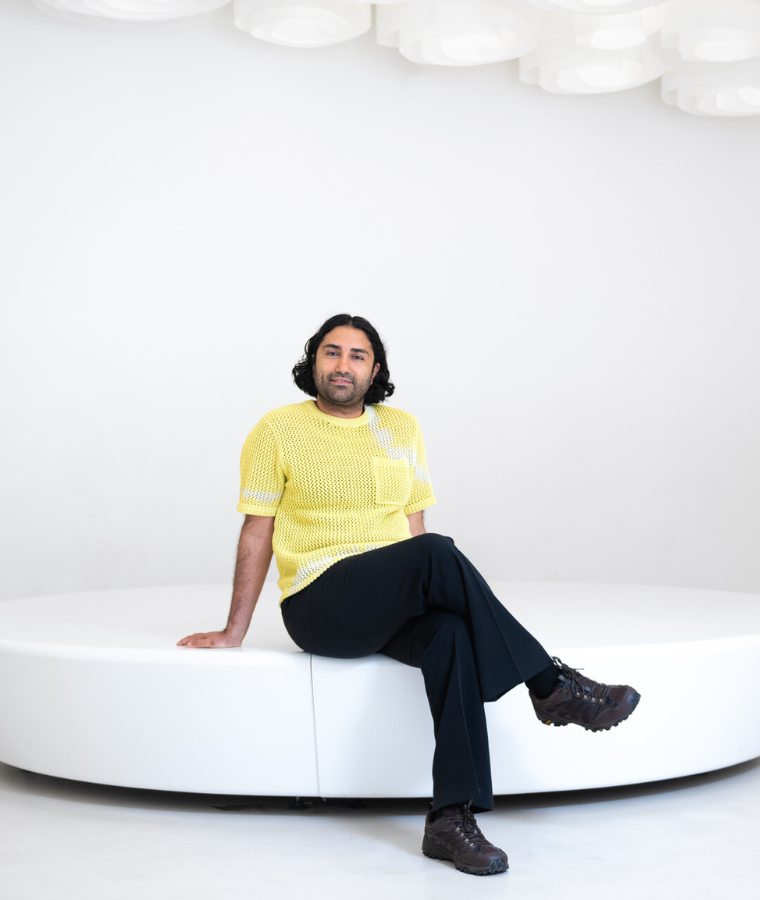Harold Hejazi, the chair of Generation 2026 jury writes:
The jury’s role was not just to assess artistic quality but to listen and try to understand a new generation’s voice. We set out to portray this generation through its art, and the selection offers a window into their lucid perspective – one that is often ungraspable to older generations. In its energy and defiance, it captures a time of transformation, a moment to rise up, challenge norms and imagine new possibilities.
—Read the whole statement by Harold Hejazi and learn who’s shaping what’s coming next.
Generation 2026
The works selected for Generation 2026 represent an unfiltered glimpse into the concerns, struggles, and aspirations of today’s young artists. Across a diverse range of media – including games, participatory new media installations and performances – these artists blur boundaries and invite audiences to engage with the most pressing social issues of our time.
At the heart of this selection is a critique of power: how freedom is constrained and control is exerted over bodies, spaces, and identities. The selection illustrates how art can reveal and question the unseen forces shaping daily life, from political structures and institutional regulations to social norms and expectations. Many works revolve around agency, exploring how one might claim space, disrupt boundaries, or redefine their relationship to public environments.
Beneath the critique of authority lies an equally powerful impulse: the urge to reconnect with heritage and personal identity. There is a wave of young artists who are deeply invested in rediscovering traditional crafts and histories. However, while celebrating art forms of the past, these artists remain engaged with the present moment. The threat of imminent environmental collapse looms large in this year’s selection. Artists confront climate change and pollution while urging audiences to consider the ecological consequences of consumerism.
A commitment to increasing visibility for marginalised groups – such as queer, disabled, and nomadic communities – also defines this generation. The artists amplify voices from these backgrounds and highlight society’s inconsistency and neglect in recognising the needs of these groups.
The pervasive influence of technology and digital culture is another recurring theme. Many artists grapple with the pressures of growing up in an era of hyperconnectivity, information overload and digital self-representation. Driven by overstimulation, they reflect on the fast-paced, chaotic nature of the digital world.
Despite the focus on these weighty contemporary issues, lighthearted humour and the absurd emerge as brave tools of resistance. This selection reveals a generation unafraid to get their hands dirty – both in their approach to craft, technology and activism, and in their willingness to confront hard truths. These artists are in the process of shaping their own identities, and in doing so, they are also shaping the future. Their works are raw, urgent and unapologetic, capturing the emotional complexity and political consciousness of youth today.
The jury’s role was not just to assess artistic quality but to listen and try to understand a new generation’s voice. We set out to portray this generation through its art, and the selection offers a window into their lucid perspective – one that is often ungraspable to older generations. In its energy and defiance, it captures a time of transformation, a moment to rise up, challenge norms and imagine new possibilities.
— Harold Hejazi,
The Chair of Generation 2026 jury

Generation 2026 Jury
The Generation 2026 jury is chaired by Canadian artist, game designer, and educator Harold Hejazi. Working extensively in participatory performing arts, game design, and community engagement, Hejazi, who is based in Helsinki, has in recent years explored the use of video games in theatre, addressing themes such as race, marginalisation, and contemporary multiculturalism.
Representing Amos Rex on the jury are museum director Kieran Long, assistant curator Krista Mamia, curator of public programmes Laura Porola, and exhibition assistant Inna Schwanck. The Generation 2023 artists are represented by Yoonsik Kim and Aino Kontinen. Aino Kontinen works with writing, performing arts, and lens-based art, while Yoonsik Kim operates at the intersection of fashion and art.